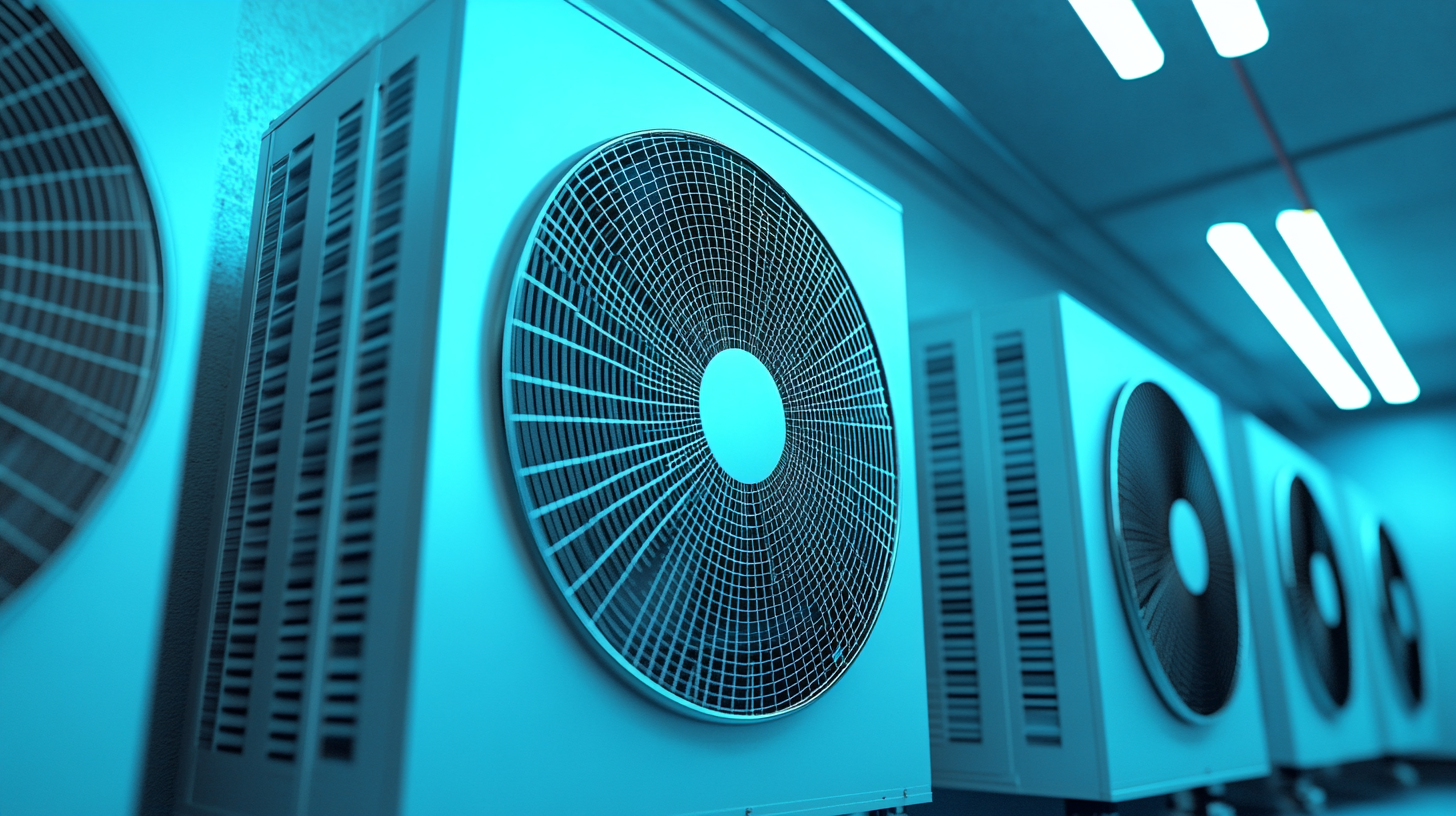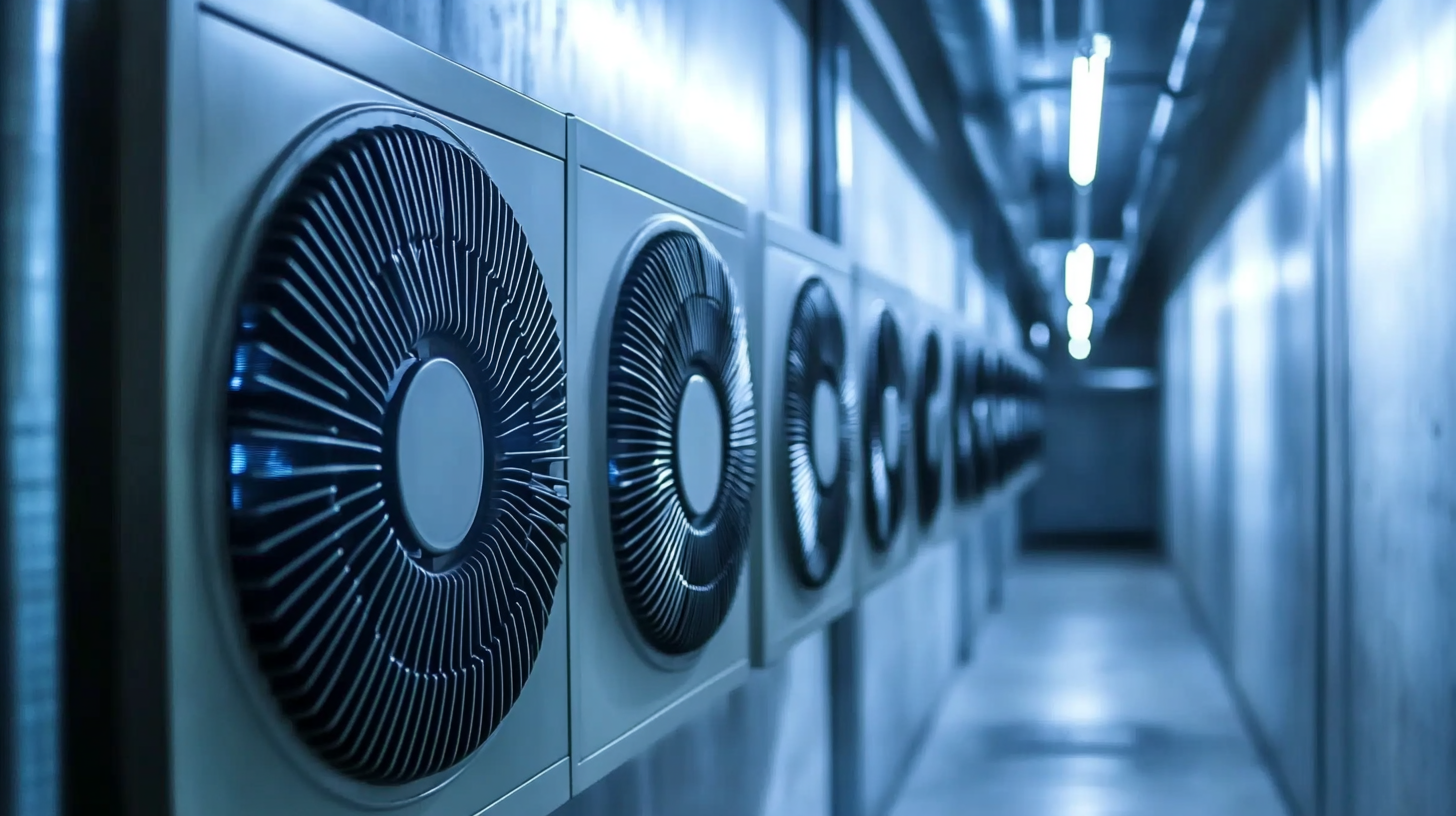Leave Your Message
- Phone
- E-mail
- Whatsapp


In today's competitive business landscape, ensuring a comfortable and productive environment is more crucial than ever. Effective air cooling solutions play a vital role in achieving this goal, especially in regions with high temperatures or humidity levels. Businesses must carefully evaluate their options to select the best air cooling systems that not only meet their specific needs but also align with their budget and sustainability goals. As a global leader in manufacturing, China offers a wide range of high-quality air cooling products that promise efficiency and reliability. This ultimate checklist serves as a comprehensive guide to assist business owners in navigating through various air cooling solutions, helping them make informed decisions that enhance their operational efficiency while contributing to a comfortable workplace atmosphere.

As businesses prepare for the rising temperatures of 2025, evaluating specific cooling needs becomes essential to ensure comfort and productivity. According to a report by the International Energy Agency, over 2.8 billion people are projected to need cooling solutions by 2050, with commercial sectors accounting for a significant portion of this demand. This highlights the urgency for businesses to assess their unique cooling requirements today, rather than waiting until the heat waves hit.
To effectively choose the best air cooling solutions, consider factors such as the size of your workspace, the nature of your operations, and energy efficiency ratings. For instance, systems with a Seasonal Energy Efficiency Ratio (SEER) of at least 16 are recommended by the U.S. Department of Energy for optimal performance. It's also wise to evaluate advanced cooling technologies such as evaporative cooling systems that can reduce operational costs and carbon footprints significantly.
**Tip:** Regular maintenance of cooling systems can enhance efficiency by up to 15%, optimizing performance while prolonging the life of the equipment. Additionally, integrating smart thermostats can allow businesses to manage energy use effectively, reducing costs in the long run. Always factor in the total cost of ownership over time rather than just the initial investment when selecting your cooling solutions.
As businesses strive for energy efficiency and sustainability, emerging technologies in air cooling solutions have become pivotal. According to a report by MarketsandMarkets, the global air conditioning market is projected to reach $155 billion by 2026, driven by innovations that enhance energy efficiency and lower operational costs. Notably, advancements in evaporative cooling technology are gaining traction, enabling significant energy savings—up to 75% compared to traditional systems—making them increasingly popular in commercial applications.
Another key innovation to watch is the integration of smart technologies in air cooling systems. A study by Technavio indicates that the adoption of IoT-enabled HVAC systems is expected to grow at a CAGR of over 12% from 2021 to 2025. These intelligent systems not only optimize energy consumption by adjusting cooling outputs based on real-time data but also enhance indoor air quality, a priority for many businesses post-pandemic. With such rapid advancements, companies looking for air cooling solutions can benefit greatly from staying informed about these trends and implementing cutting-edge technologies in their operations.
| Feature | Importance | Current Innovations | Expected Trends |
|---|---|---|---|
| Energy Efficiency | High | Smart thermostats, variable speed compressors | Increased focus on sustainability |
| Cost | Medium | Upfront cost transparency tools | Long-term ROI analysis |
| Environmental Impact | High | Natural refrigerants, low emission technologies | Circular economy models |
| User Control | Medium | Mobile apps, voice control integration | Integration with smart buildings |
| Maintenance Requirements | High | Predictive maintenance technologies | Remote monitoring of systems |
When it comes to selecting the best air cooling solutions for your business, understanding the cost-effectiveness of different options is vital. Traditional air conditioning can become expensive due to energy costs and maintenance. However, alternative methods like liquid cooling have gained popularity, particularly for data centers where efficient chip cooling is paramount. These methods not only reduce electricity consumption but also enhance overall system performance.

Tips: Consider implementing immersion cooling systems for sensitive electronic equipment. This technique uses a non-conductive liquid to directly cool components, often resulting in lower energy usage and minimizing the risk of overheating. Additionally, evaluate the long-term savings associated with maintenance and potential downtime when choosing your cooling solution.
Another cost-effective approach is utilizing air economizers, which leverage natural outdoor air to cool the facility, especially during cooler months. This can significantly lower your energy bills while maintaining optimal temperatures. Ensure you analyze the specific cooling needs of your environment to determine which solutions will provide the best return on investment while keeping operational efficiency high.
 When selecting air cooling solutions for your business, it's crucial to prioritize
environmental impact and sustainability. The push for
energy-efficient technologies in the HVAC sector is becoming
increasingly urgent, as companies recognize the need to minimize their carbon footprint. Innovative cooling
solutions are now being developed that not only meet operational demands but also adhere to sustainability
standards. Implementing liquid cooling technologies, for instance, can significantly reduce energy consumption
and promote more sustainable operations.
When selecting air cooling solutions for your business, it's crucial to prioritize
environmental impact and sustainability. The push for
energy-efficient technologies in the HVAC sector is becoming
increasingly urgent, as companies recognize the need to minimize their carbon footprint. Innovative cooling
solutions are now being developed that not only meet operational demands but also adhere to sustainability
standards. Implementing liquid cooling technologies, for instance, can significantly reduce energy consumption
and promote more sustainable operations.
Tips for businesses considering air cooling solutions include evaluating the efficiency of the systems and their
impact on resource usage. Look for options that utilize
alternative cooling methods, such as water-free systems,
which can conserve essential resources and reduce waste. Additionally, investing in
smart technologies powered by AI can enhance the
performance of your air conditioning units, ensuring that they operate at optimal efficiency while minimizing
environmental impact. By prioritizing sustainable cooling solutions, your business can contribute to a
healthier planet while maintaining a comfortable workspace.
When selecting the best air cooling solutions for your business, it's essential to consider various technologies that align with energy conservation goals. A comparative analysis of popular air conditioning systems reveals significant differences in their energy efficiency and performance, particularly when applied to nearly net-zero energy buildings. For instance, traditional compression systems often use more energy compared to newer technologies such as liquid-cooling systems integrated with thermoelectric generators. These innovative systems leverage heat recovery processes to enhance overall efficiency, making them a sustainable choice for modern commercial environments.
Moreover, understanding the stochastic behavior of air conditioning systems can provide insights into their energy consumption and economic viability. By employing a stochastic model, businesses can analyze the uncertainty in energy performance and lifecycle costs associated with different cooling technologies. This method not only highlights the importance of energy-efficient systems but also aids in making informed decisions that can lead to substantial savings. In an era where energy costs are critical, investing in systems that maximize cooling efficiency while minimizing environmental impact is more crucial than ever.
